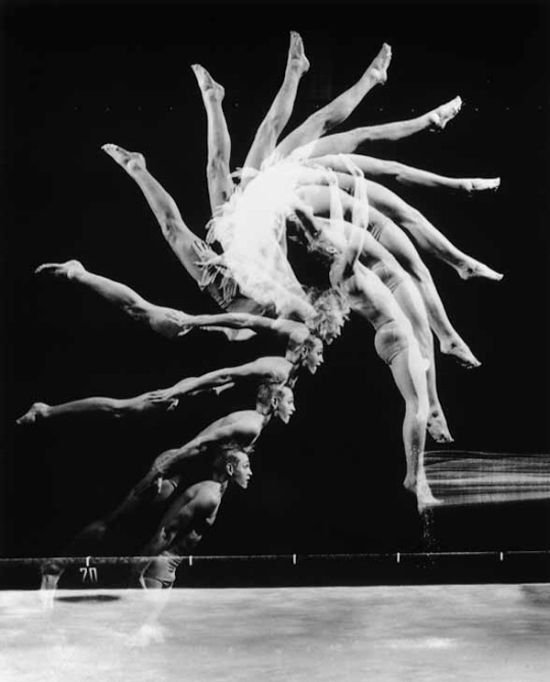|
|
Seeing The Unseen In Ultra High-Speed Photography By Harold Edgerton
|
In 1937 he began a lifelong association with photographer Gjon Mili, who used stroboscopic equipment, particularly a "multiflash" strobe light, to produce strikingly beautiful photographs, many of which appeared in Life Magazine. This strobe light could flash up to 120 times a second. Edgerton was a pioneer in strobe photography, subsequently using the technique to capture images of balloons during their bursting, a bullet during its impact with an apple, or tracking of a devil stick motion, as only a few examples. He was awarded a bronze medal by the Royal Photographic Society in 1934, the Howard N. Potts Medal in 1941, the Albert A. Michelson Award in 1969, and the National Medal of Science in 1973.
He was a co-founder of the company EG&G, with Kenneth Germeshausen and Herbert Grier, in 1947. EG&G became a prime contractor for the Atomic Energy Commission and had a major role in photographing and recording nuclear tests for the United States through the fifties and sixties. For this role he developed the Rapatronic camera, which was supplied by EG&G.
His work was instrumental in the development of side-scan sonar technology, used to scan the sea floor for wrecks. Edgerton worked with the undersea explorer Jacques Cousteau, by first providing him with underwater stroboscopes, and then by using sonar to discover the Britannic. Edgerton participated in the discovery of the American Civil War battleship USS Monitor. While working with Cousteau, he acquired the nickname he is still known by in photographic circles, "Papa Flash".
In addition to having the scientific and engineering acumen to perfect strobe lighting commercially, Edgerton is equally recognized for his visual aesthetic: many of the striking images he created in illuminating phenomena that occurred too fast for the naked eye adorn art museums worldwide. In 1940 his high speed stroboscopic short film, "Quicker'n a Wink" won an Oscar.
|
|









